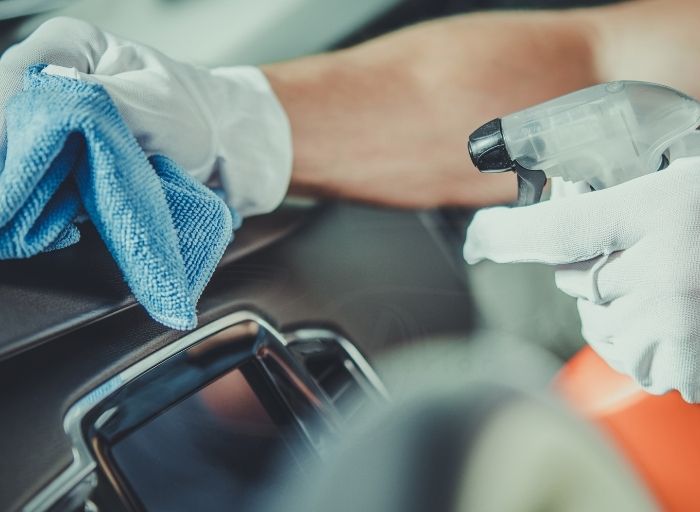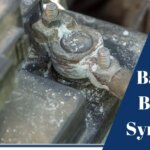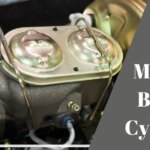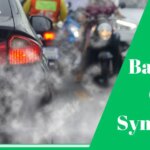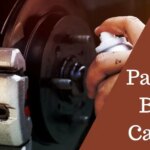
There will be a time your car gets dirty, but there aren’t any car wash products around. What can you do? There are plenty of substitute products around the house car owners can use. In this blog, you’ll find household products to clean car exterior and how to use them.
Here is a summary table:
| Targeted Tasks | Ingredients | Note |
|---|---|---|
| General cleaning | Vinegar Laundry detergent Vinegar Shampoos Baking soda | Rinse off quickly |
| Car's paintwork | Toothpaste Isopropyl alcohol Baking soda mixed with vinegar | Avoid applying too much pressure Wipe in circular motions |
| Metal parts | Melamine sponge 0000 steel wool | Make sure you buy the right grades |
| Windshield and windows | Isopropyl alcohol Diluted white vinegar Razor blades (to remove adhesive on glass) | |
| Headlights | toothpaste | Should mix with warm water |
Pros & Cons of Using Household Products to Clean Car Exterior
Table of Contents
Benefits of using household products to clean car exterior
- It is cheaper than buying car cleaning products
- You can use any chemicals you have in your kitchen to wash your car
- Use your favorite cologne or fragrance on the car
- Easily accessible and easy to store in your home
Drawbacks of household products to clean car exterior
You need to consider some things before using these products.
- They may damage your car paint or the wax layer
- It may not get rid of all the dirt, especially when you use a detergent to wash your car.
- It is not very powerful in removing tough stains and organic matters like tree sap or bird droppings.
- It may end up making your hands dry and rough.
- You may not be fully satisfied with the outcome if you don’t know these products’ proper use and application.
- It may not be as effective as using a car wash product specially formulated for cleaning a car’s exterior.
Household Products to Clean Car Exterior
When considering the pros and cons of household products to wash car exteriors, you shouldn’t apply them too often to your car. In the long run, cleaning car parts using special designed products is best.
Here are some common around-the-house items you can use.
#1 For general cleaning
- Vinegar
- Laundry detergent
- Vinegar
- Shampoos
- Baking soda
Vinegar

The acetic acid in the vinegar is great for removing dirt and grime during a car wash. It also has antiseptic properties that will kill any bacteria. Mix it with water together with light detergent and use a sponge to scrub your car’s exterior from top to bottom.
To use vinegar, you need to dilute it with water. The proper ratio is three water with vinegar. Mix it and then use a sponge or cloth to clean your car. Vinegar can be used to remove mold as well.
Laundry detergent
As for simple cleaning, laundry detergent can do the trick. However, it may not be as effective in applying pressure as a car wash product. Mix one part of laundry detergent with two to three parts of water and wash your car’s exterior with this mixture using a sponge or cloth.
The soap won’t leave any residue on your car’s exterior, but you must immediately rinse it off using regular water.
Shampoos
Hair shampoos or hand wash soaps can be used to wash the car exteriors as they can remove grime and dirt. You may use mild colors of shampoos. The best ones are the ones that contain conditioners, which will leave behind a shiny and moisturized finish.
Like laundry detergents, shampoos shouldn’t sit too long on car paint. You must wash them off quickly as they can be harsh on car paint.
Baking soda
Baking soda is also a good product for general cleaning, which can get rid of dirt and grime. However, it can’t get rid of stains.
Mix one part of baking soda with three parts water (not too much) and scrub your car’s exterior using sufficient water and a sponge or cloth. Don’t leave it on the car to dry, as it will completely change its color over time.
#2 For metal parts
- Melamine sponge
- 0000 steel wool
You can use 0000 steel wool or a melamine sponge to give the wheels or other metal parts a new shiny look.
Melamine sponge
Strong chemicals work best to eliminate baked-on brake dust that has turned bronze in color. However, a delicate melamine sponge can be used to clean dirty wheels at a reasonable price thoroughly.
Before cleaning the often dirtier wheel barrels, wipe the wheel faces with a moist melamine sponge. It will be less likely to scratch the finish if you clean the wheel’s more sensitive and less dirty area before going on to the dirtiest part.
0000 steel wool

Apply metal polish and rub 0000 steel wool over the stainless steel exhaust tips to polish them. Use steel wool that is coarser in texture on metal that has corrosion or a lot of carbon buildup. Steel wool is one of the best DIY metal polishing tips for removing rust from metal.
#3 For windshield and windows
- Isopropyl alcohol (or rubbing alcohol)
- Diluted white vinegar
- Razor blades (to remove adhesive on glass)
Isopropyl alcohol
Isopropyl alcohol can be diluted with distilled or reverse-osmosis water to make a cost-effective and efficient glass cleaner. Pour water into a ratio of 4 to 1 for the 91% alcohol and 3 to 1 for the 70% alcohol. It has lots of cleaning power and won’t evaporate too rapidly if it is a window cleaner manufactured with about 20% alcohol.
Diluted white vinegar
A cost- and environmentally-friendly window cleaner can be made by diluting white vinegar two-to-one with distilled or reverse osmosis water. Windows with water stains may require a stronger vinegar solution and greater dwell time to clean.
Use razor blades to remove adhesive on glass
To remove glue from glass, only use metal razor blades. Remove adhesive off paint or glass by using plastic razor blades. Cleaning will be considerably simpler if the adhesive is heated with a hair dryer before scraping with a razor blade.
#4 For headlights: Use toothpaste

If you wish to clean your headlights and bulbs, use your old toothpaste.
Make sure you mix it in warm water so the toothpaste can dissolve completely and clean the necessary parts of your car. Or you can just apply it to a clean cloth and rub it.
Using toothpaste can make the headlights shine again.
# 5 To clean the car’s paintwork
You can use the following household items to remove stains or adhesive on a car’s outside body:
- Toothpaste
- Isopropyl alcohol
- Baking soda mixed with vinegar
Toothpaste
To remove paint scratches, use toothpaste with a light to medium abrasiveness. Using a microfiber towel and toothpaste, gently rub the paint in a circular motion.
Avoid applying too much pressure because doing so can easily result in the introduction of new paint flaws.
When removing scratches, you should wipe car paint in a circular manner. If not, the process could leave behind unattractive swirl markings. A layer of wax, sealer, or coating applied to the paint will aid in preventing contamination.
Isopropyl alcohol
Isopropyl alcohol is able to remove the adhesive. Isopropyl alcohol will quickly dissolve any adhesive that remains after a sticker or emblem has been removed from a car.
The removal procedure will go faster if you use 91% alcohol, and you might use less product overall.
To remove the glue from the paint or glass, saturate a microfiber towel with isopropyl and wipe it over the surface.
Baking soda mixed with vinegar
No one wants to see stains on their car’s body. Baking soda and vinegar make a potent cleaning solution that effectively gets rid of a variety of stains.
Before adding baking soda, presoak the stain with a spray bottle with vinegar. The stain should be treated with extra vinegar and agitated with a nylon brush.
Use the hot water extractor trick to clean even more thoroughly while reducing vinegar’s residual smell.
DIY Car Cleaning Using Household Products
Cleaning a car at home shouldn’t be a problem. Let’s take laundry detergent as an example to show you how to wash the car using a home item. You should follow steps to avoid damaging your car paint when washing.
Prep the car wash solution
Mix 1 part of laundry detergent in a bucket with 2-3 parts of water.
Step 1. Wet the vehicle
The first step is to wet the car. Make sure you cover all the surfaces with water. A pressure washer can do this well. However, you don’t need to buy one. You can use a garden hose to wash your entire car.
Step 2. Apply the car product
The next step is applying the household product to the car. Mix household products with water (in the right ratio) and stir. Remember, different products can be used for different purposes. For example, vinegar is best applied on your car’s painted surfaces, whereas shampoos are designed to remove dirt.
Step 3. Wash the car
You should wash the car in a small area, rinse it off and move to the next area. Doing this will ensure the solution does not sit too long on the car paint.
Step 4. Dry the car
After you’ve washed the car, you need to dry your car so that it will not get damaged by wetness. You can use a premium chamois or towel to do this. Just make sure that the towel or chamois does not contain lint, and other particles, as these will scratch your car paint with time due to abrasion and friction.
Do You Believe $50 Is Enough to Detail a Car Inside Out? Check out This Video!
Frequently Asked Questions
Can I use vinegar to clean my car’s exterior?
Vinegar can be used to clean your car’s exterior, but it’s important to dilute it with water to avoid potential damage to the paint. It’s best to use a mixture of vinegar and water in a spray bottle and gently wipe the surface with a microfiber cloth.
Is dish soap safe for car paint?
While dish soap can effectively remove dirt and grime from car paint, it’s important to use a mild, pH-balanced formula specifically designed for automotive use. Regular dish soap can strip away wax and protective coatings, potentially damaging the paint over time.
Can toothpaste clean headlights?
Toothpaste can be used as a temporary solution to clean cloudy or yellowed headlights. Its mild abrasive properties can help remove oxidation and restore some clarity to the lenses. However, it’s not a long-term solution and professional headlight restoration may be necessary for more severe damage.
Can you use baking soda to clean the car exterior?
Baking soda can be used as a mild abrasive cleaner for certain surfaces of a car’s exterior, but it’s not recommended for general use. It can potentially scratch or damage the paint if used incorrectly or with excessive force. It’s best to use baking soda sparingly and cautiously and always test it on a small, inconspicuous area first to ensure it doesn’t cause any adverse effects.
Can you use vinegar to clean the car exterior?
Vinegar can be used to clean certain areas of a car’s exterior, but it’s important to dilute it with water to avoid potential damage to the paint. It’s best to use a mixture of vinegar and water in a spray bottle and gently wipe the surface with a microfiber cloth. However, it’s important to note that vinegar is unsuitable for all surfaces and may not effectively remove certain dirt or grime.
Wrap Up
You should know that household items can be used clean the car’s exterior. They are excellent car cleaning hacks, but you must use them carefully. Before using these products, you need to check their ingredients so that no damage will be done to your car paint.
Again, it’s best to use a special car wash soap regularly, as household items should only be used as alternative options.
Hi everyone, My name is Ollie Barker.
As a seasoned auto expert I have 25 years of experience working in repair and detailing shops. I love to share my tips & tricks to all car lovers, so that’s why I’m here at Automotive Gearz publishing my content, sharing my passion. Also, I’ve been giving my recommendations on which products are the best to have on the market. I always thought it was hard to pick the right part, so hopefully I can make that a bit easier for you.
Hope you enjoy your time on my little blog!

